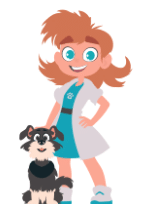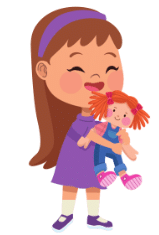Notes: Pronouns | English Olympiad Class 1 PDF Download
What are Pronouns?
Pronouns are words that take the place of nouns, making our sentences smoother and more efficient.
Common Pronouns:
Personal Pronouns: Personal pronouns replace specific people or things.
Examples: I, you, he, she, it, we, they
Possessive Pronouns: Possessive pronouns show ownership or belonging.
Examples: mine, yours, his, hers, its, ours, theirs
Demonstrative Pronouns: Demonstrative pronouns point to specific things.
Examples: this, that, these, those
Relative Pronouns: Relative pronouns introduce relative clauses and connect them to a noun.
Examples: who, whom, whose, which, that
How to Use Pronouns:
Replacing Nouns: Pronouns replace nouns to avoid repetition and make sentences flow better.
Example: Mary has a dog. She loves it very much.

Showing Possession: Possessive pronouns indicate ownership.
Example: The red bike is mine.

Practice Time
Replace the underlined noun with the correct pronoun:
Q1: "Raj is a talented artist. [He/She] draws beautiful pictures."
 Ans: Raj is a talented artist. He draws beautiful pictures.
Ans: Raj is a talented artist. He draws beautiful pictures.
Q2: Choose the correct possessive pronoun:
"The toy belongs to me. It is [my/mine]."

Ans: The toy belongs to me. It is mine.
Why Are Pronouns Important?
Pronouns make our sentences neater and help us communicate more efficiently. They're like little helpers that keep our language smooth and easy to understand. Keep using pronouns to make your sentences shine, language enthusiasts!
|
29 videos|97 docs|63 tests
|
















